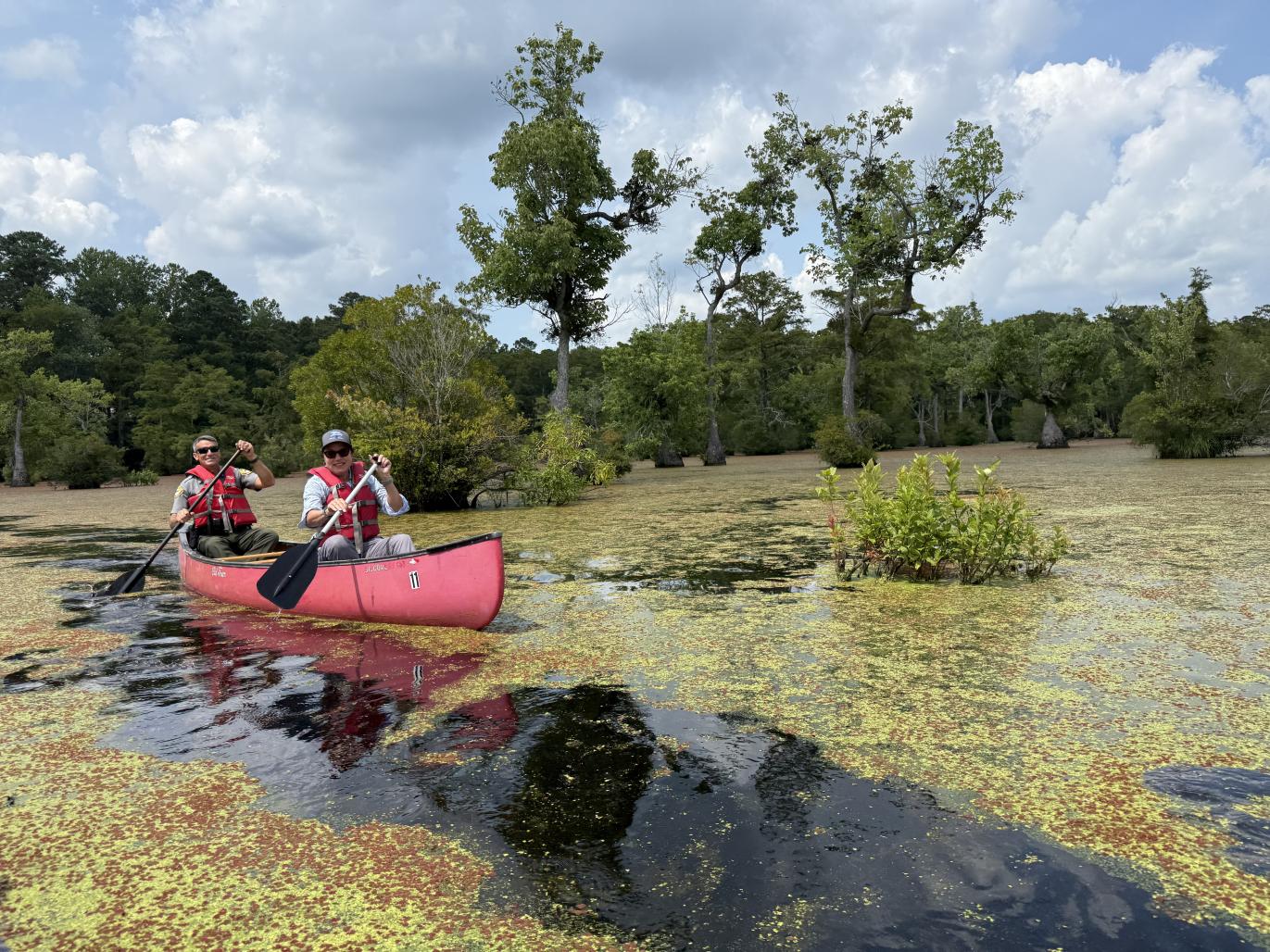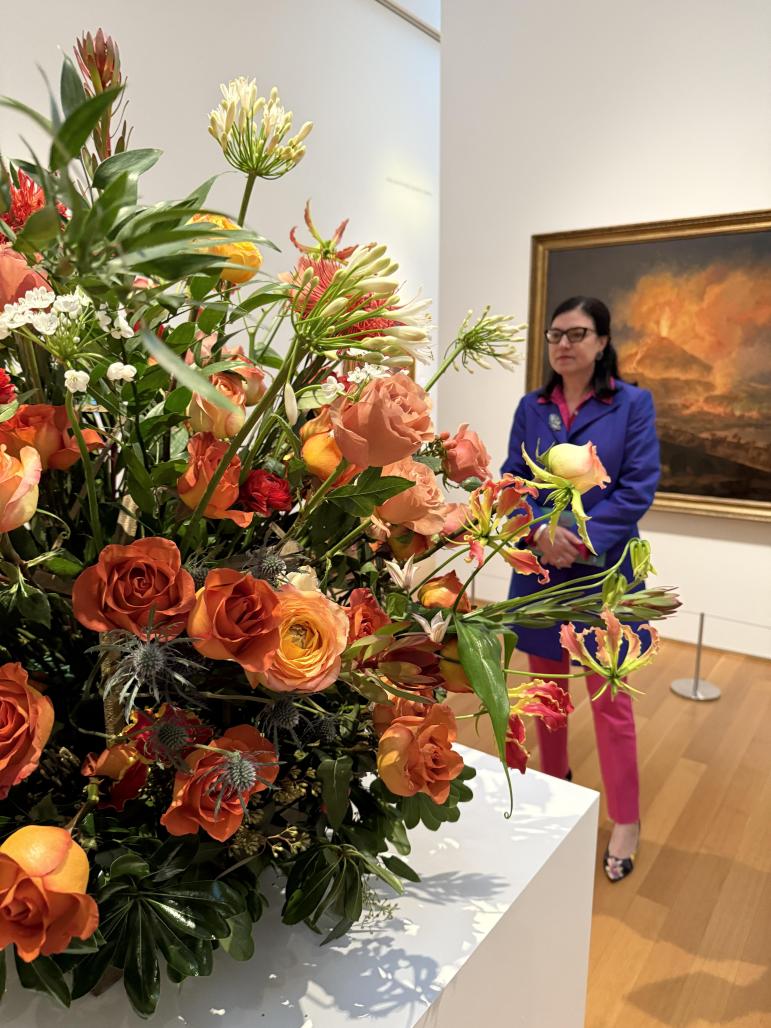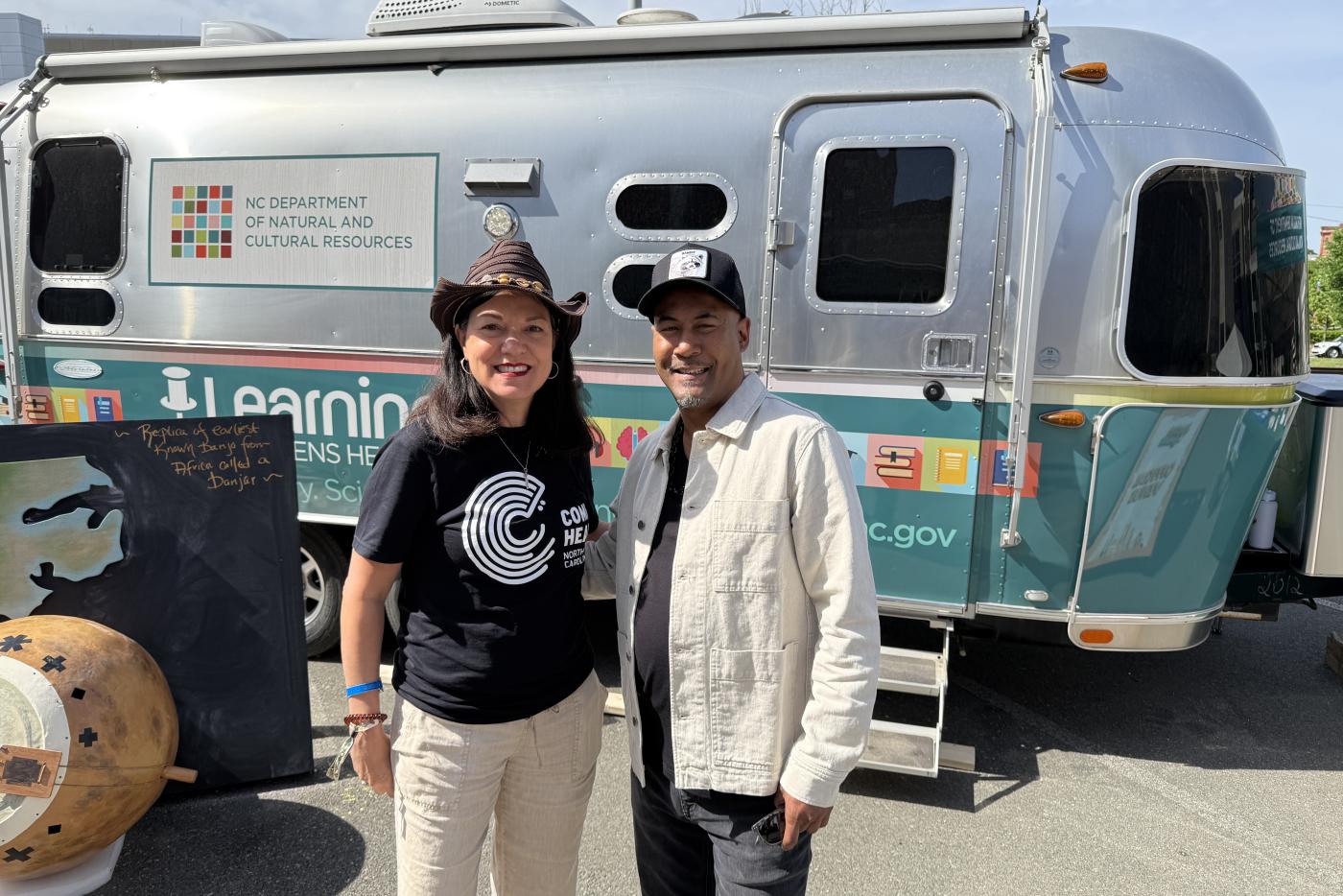Author: Andie Freeman
Header image: Secretary Pamela Cashwell (L) with Al Strong (R), a Grammy-nominated trumpet player, composer, recording artist, and educator. Secretary Cashwell wears a t-shirt from Come Hear NC, a Department of Natural and Cultural Resources initiative celebrating music in North Carolina. Photo by Holly Nelson
In January, Pamela B. Cashwell took the oath of office to head the Department of Natural and Cultural Resources (DNCR). As secretary, she oversees the state’s arts, cultural, historic, and natural resources—more than 100 locations, staffed by 2,400 employees. She came to this position as a longtime public servant, most recently as secretary of the North Carolina Department of Administration.
Since taking office, Secretary Cashwell has been busy reviewing budgets, meeting staff, and visiting locations across the state. Her social media feeds showcase the wide variety of locations within the department.
“The past six months have been fabulous! I've been learning a lot about the department and visiting our sites. I’ve been traveling a lot and meeting employees where they are, seeing what they do, and understanding their needs. I’m getting to look at our facilities across the state and assess needs.”
She has had many memorable experiences this year, such as her swearing-in ceremony at the North Carolina Museum of Art and Maya Freelon’s Whippersnappers exhibit at the Stagville state historic site in Durham. “It was a beautiful and meaningful exhibit that brought together art and history. Such integration is crucial for me, and for anyone in this role. Leading the department is about integrating all parts of it—the natural and cultural; the arts and history—cohesively and sharing that with the people of the state.”


One of Secretary Cashwell’s first priorities was addressing Hurricane Helene’s devastation in western North Carolina. In January, she visited the arts district in Asheville with Jeff Bell, executive director of the North Carolina Arts Council. “I had been there about a month before Helene and had spent time shopping in the arts district. It was heartbreaking to see the post-Helene damage. Jeff and I met with many artists, arts organizations, and representatives from arts councils. We wanted to hear about their struggles, how the recovery was going, and their needs. The visit gave me a clear picture of how Helene significantly impacted the arts.”
During her trip west, she also visited the town of Marshall, where Marshall High Studios occupies a brick schoolhouse built in 1925 on Blannahassett Island. The restored space houses 26 art studios and an auditorium. “We helped clean up some of the boards for the hardwood flooring. Some areas were already opening for artists to return. It’s an excellent representation of how resilient artists are. Art is being created from the Helene experience, whether through photography, paintings, or other media. People are using art as a tool for healing.”
Secretary Cashwell hails from the Coharie and Lumbee tribes, making her the first American Indian woman to head a cabinet department in North Carolina. Culture has been woven into her life from the beginning, so joining DNCR was a natural fit. Her mother worked for the North Carolina Commission of Indian Affairs, and observing her instilled in Cashwell the importance of public service. Another significant influence is her experience as a Native American fancy dancer from a young age. Creating one’s own regalia, which involves design, sewing, and beadwork, is part of the discipline of this art form. As she grew, she became more competitive, especially during high school and college.
“Dancing shaped my life by exposing me to my culture and family,” Secretary Cashwell says. “In the native community, everyone is family, even if they're not blood-related. That was an important part of my youth. Watching my mom work for the North Carolina Commission of Indian Affairs, I knew many people in North Carolina tribal communities.
“Dancing also taught me team building, and exposed me to people from diverse backgrounds. I think one of my strengths is relating to people from different socioeconomic and ethnic backgrounds, and dancing helped build that skill.
“We recently visited Saluda for the reopening of Chimney Rock State Park. Artists donated their work to raise money for the park. North Carolina is strong, and artists are coming together to help one another.”
Looking to the future, Secretary Cashwell sees many opportunities for the department to strengthen the foundation for the arts in the state. She says she has been impressed by the optimism of the people of western North Carolina and the power of the state’s support for rebuilding the west. “People are intentional about supporting artists, and I find that exciting. I firmly believe these spaces will rebuild more resiliently.”
Secretary Cashwell says that being part of DNCR and sharing the department’s work inspires her. “Before joining the department, I heard about all the good work happening here. I grew up visiting state parks, historic sites, and museums—many places this department oversees. I have experienced the department throughout my life and know how important it is to North Carolina’s culture and economy. Having the opportunity to contribute and move the department forward is exciting. The department faces budget challenges from federal cuts, escalating costs, and decreasing state coffers. But we have a great team to help us navigate those challenges. The thing I love most about meeting employees is their mission-driven attitude and passion for what they do. You can't help but feel excited to be part of it.”

